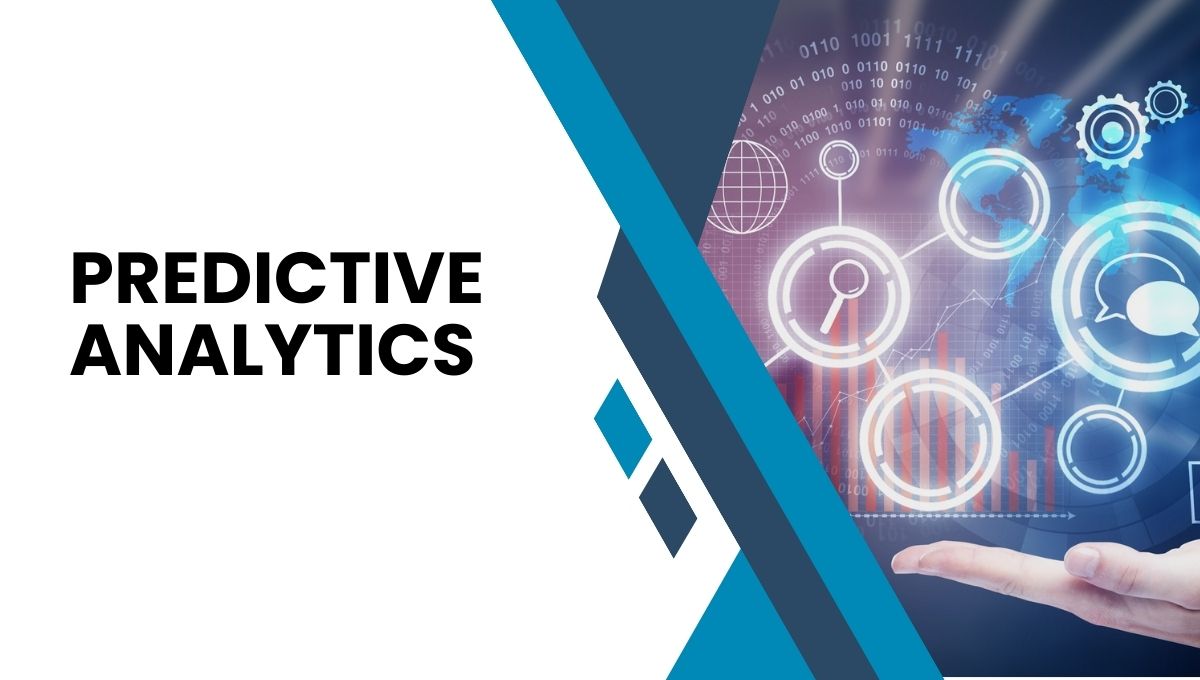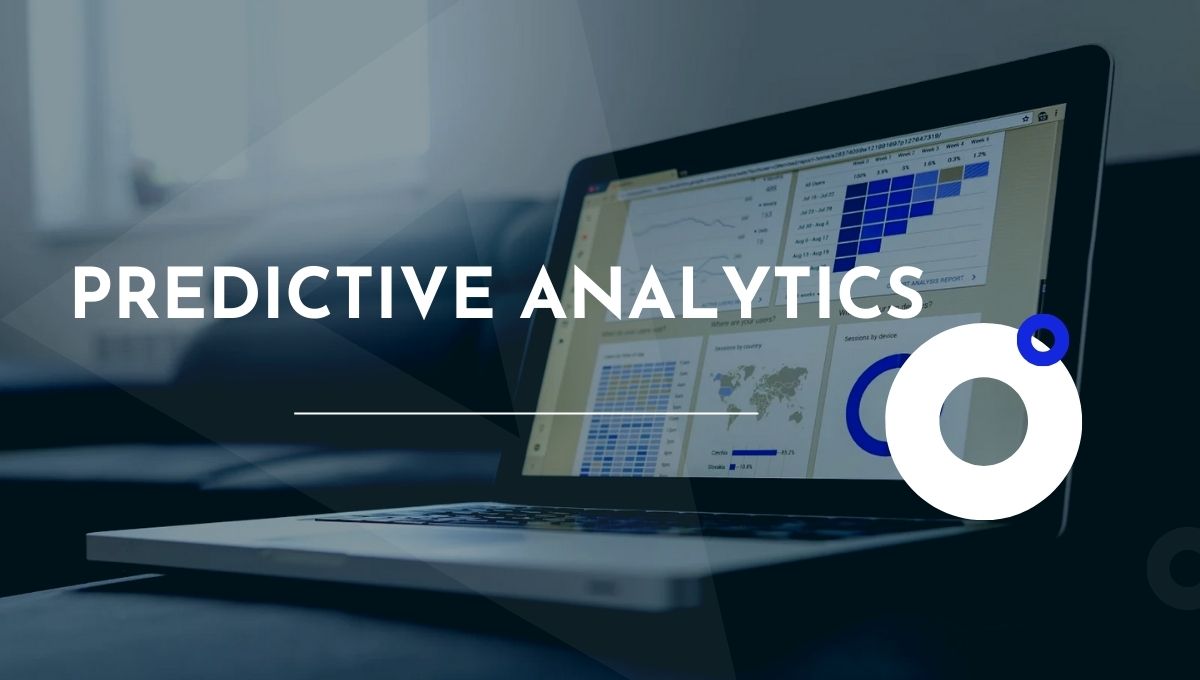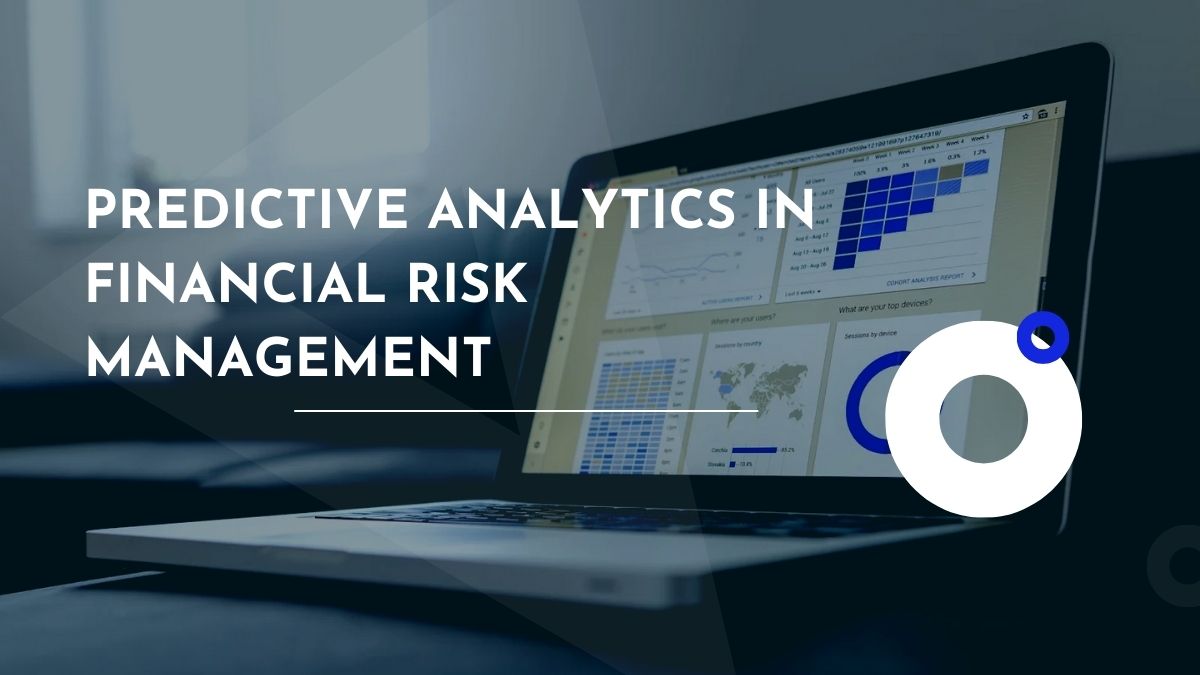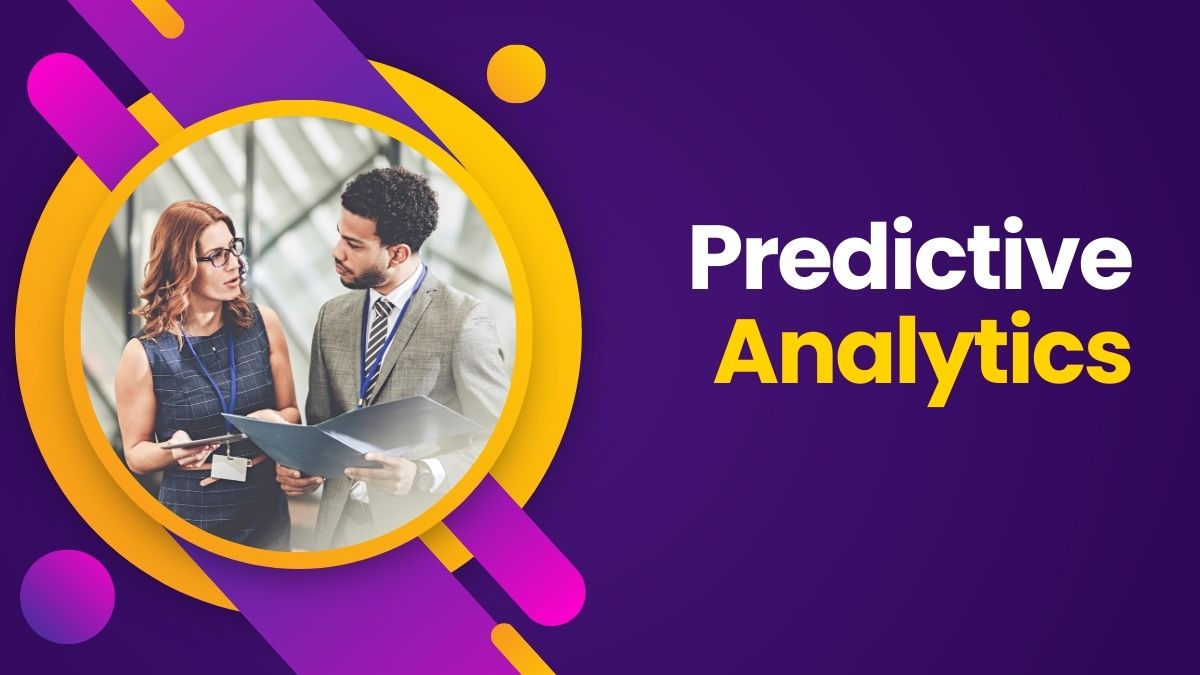As we enter a new era in corporate finance, predictive analytics will take the reins. By 2028, it is expected that 80% of corporate finance will realise the potential of this technology and bring it into every aspect of their operations. The implications are profound, and the possibilities are vast. But what does this digital transition mean for finance professionals? In a word, it means: experience in upskilling. If you are open-minded and willing to seize this opportunity, predictive analytics will not only help you future-proof your career but also allow you to work on the front line of corporate finance as it shifts into its next era. In this blog, we will discuss the skills required to work and thrive in this changing context. The focus will be on predictive analytics – a powerful tool that uses historical data and statistical algorithms to forecast future trends and behaviours. Importantly, this is not simply a trend; it represents a shift – an opportunity for you to be a pioneer of change in the finance sector. So let’s get started with some basic understanding of predictive analytics and how you can set yourself up for success in the future of corporate finance.
The Rise Of Predictive Analytics in Contemporary Corporate Finance
Corporate finance is experiencing a seismic change with predictive analytics being adopted at warp speed and is now positioned to be an industry disruptor. By 2028, it is projected that a significant portion of the corporate workforce, estimated at 80%, will be using predictive analytics, thereby redefining the future of the corporate finance sector. Predictive analytics uses big data, machine learning, and statistical algorithms to provide insight into future financial trends and empowers companies to:
- Identify and control risk.
- Optimise financial decisions.
- Increase operational efficiency and profitability.
- Predict market trends and customer behaviour.
In addition, the use of predictive analytics in corporate finance is creating a demand for new skill sets, including:
- Data analysis and interpretation knowledge and skills.
- Understanding of machine learning and artificial intelligence.
- Knowledge and understanding of statistical models and algorithms (SMA).
- Ability to convert raw data into strategic insights.
| Core Predictive Analytics Skills | Value |
|---|---|
| Data analysis | How to derive actionable insights from big data |
| Machine learning | How to automate and improve predictive models |
| Statistical modelling | How to interpret the statistical concepts of CMA |
| Strategic insight | How to make sense of the data and recommend actions |
As the momentum in predicting analytics quickly unfolds in corporate finance, these technical skills will be vital. Professionals will need to adapt to this arena and continue to invest in tools and talents that harness the opportunity predictive analytics offers in supporting the success of corporations.
Welcome Future Forward: An Exposition of Financial Forecasting Tools
In a fast-changing world of finance, predictive analytics will be revolutionary. As we get closer to 2028, the usage of finance analytics tools, especially in the area of predictive analytics, is expected to increase dramatically.
- Predictive Analytics: This strong and valuable tool uses both historical data and machine learning or artificial intelligence to predict specific outcomes in the future. These predictive outputs enable organisations to leverage data-driven decision-making, creating a positive business outcome and driving financial growth.
- Risk Management: In addition to predictive analytics, finance analytics tools can also pinpoint risk and areas of potential weakness for the organisation. This can provide the opportunity to develop strategies to minimise financial risk.
- Cost Management: Lastly, finance analytics tools allow organisations to assess the way they spend their money. This can help the organisation identify areas of unnecessary costs and implement strategies to be more cost-effective.
While there is much focus on the predictive aspect of finance analytics tools, they also provide a lens to look at and assess current financial health and the degree of risk. With machine learning and AI, predictive analytics tools have improved considerably from costly and ineffective alternatives. Some popular finance analytics tools include:
- Tableau: Tableau is a user-friendly interface with robust reporting capabilities.
- Oracle Crystal Ball: Oracle Crystal Ball is a spreadsheet-based application for predictive modelling, forecasting, and simulation.
- IBM SPSS Modeller: IBM SPSS Modeller is a predictive analytics tool and platform that brings predictive intelligence to the decisions that individuals, groups, systems, and enterprises make.
As 2028 approaches, proficiency in a range of financial analytics tools is a critical skill for all financial professionals. Now is the time to embrace finance analytics tools and become a leader in the emerging and competitive financial market.
Predictive Analytics – The Future of Business Planning
With the unpredictable nature of today’s economy, many business leaders are turning to advanced applications to help them understand current trends and predict future outcomes. One technology that is at the forefront of this shift in thinking is predictive analytics, which is being used to develop insightful strategies for financial forecasting.
Companies should adopt predictive analytics for financial forecasting for several reasons:
- Accuracy: Predictive analytics provides forecasts based on historical data, and predictive analytics uses machine learning techniques, which can lead to improved accuracy beyond any traditional methods.
- Efficiency: Predictive analytics enables businesses to automate forecasting, saving time and money.
- Identifying Risk: Predictive analytics will identify potential financial risks before they occur, enabling companies to plan and execute strategies to mitigate them.
It is predicted that by 2028, 80% of all corporate finance will be using predictive analytics in their financial forecasting, and this will also lead their workforces to a new mix of skill sets.
| Key Skills | Explanation |
|---|---|
| Data Science | Applicants will have data evaluation and analysis skills for complex datasets. |
| Machine Learning | Applicants will understand how to identify and interpret the machine learning techniques used in predictive analytics. |
| Strategic Discussion | Applicants will be able to use the forecasts to reconsider and plan out their strategic direction. |
Adopting predictive analytics is not just a strategic direction but also a change in everything that we have believed about financial forecasting. Companies that can respond quickly by making adjustments and changing will be the ones to thrive in the increasingly data-based world of corporate finance.
Unlocking Financial Insights with Predictive Algorithms
The finance industry is entering a new phase of development, shifting its focus from numbers and spreadsheets to fundamental data processing algorithms based on data science. Specialising in data analytics, mainly predictive analytics, has become a game-changing tactic used by finance professionals around the world.
Predictive analytics is a more advanced form of data analytics that uses historical data, statistical algorithms, and machine learning techniques to identify the likelihood of future outcomes. Predictive analytics is being used in finance for several applications:
- Risk Management: Predictive models are used to detect and assess the risks and uncertainties that are anticipated to have potential impacts in real time, which spurs immediate action.
- Investment Strategies: Utilising data analytics to predict investment insights with greater precision is a method that yields higher returns on investment.
- Operational Efficiency: Predictive analytics is used to improve a company’s financial operations to reduce costs and save time.
The finance industry is beginning to see the scale of opportunity that data analytics offer. An upcoming report predicted that an astonishing 80% of corporate finance will use predictive analytics by 2028.
The increasing trend of predictive analytics is leading to an increased level of demand for professionals working in data analytics. To remain competitive within the industry, finance professionals may want to enhance their skills in the following areas:
- A thorough knowledge of statistical methods and data analysis
- Knowledge of analytics software, such as Python and R
- Skills in machine learning or artificial intelligence
- The ability to convert complex data into an actionable representation and insight
As we approach a more data-driven future, the ability to conduct predictive analytics will soon become a critical skill for finance professionals. Accepting the potential of this new era will help build more effective decision-making, as well as enhance operational efficiency and profitability.
The Growing Significance of Predictive Analysis within Financial Industries
The implementation of predictive modelling within finance is ever-evolving, with the trend only ever going to increase. In fact, by 2028, it is believed that up to 80% of corporate finance will depend heavily on predictive analytics, but why is this shift happening?
The reasons are vast:
- Enhanced Decision-Making: Predictive analytics empowers finance professionals to predict financial trends and market fluctuations. This allows them to create and execute strategic decisions that mitigate risks and maximise profits.
- Risk Management: Predictive models help identify promising risks and enable mitigation ahead of scope, for example, predicting credit defaults, bankruptcy incidences, or market fluctuations and government financial pitfalls.
- Retaining Clients: Financial institutions can predict client behaviour using predictive analytics, allowing them to tailor their services to increase customer satisfaction.
The rise of predictive modelling in the finance sector is easy to judge, and its benefits are undeniable. It’s going to reshape finance, help businesses have more data-led decisions, decrease risks and improve customer retention.
They say that while the move to predictive analytics is exciting, it highlights the need for more people to do it. As demand for predictive modelling in finance continues to increase, so will demand for people who can collect, handle and analyse complex financial data. For those of you looking to secure your careers in finance and choosing the best way to add value in your business, it wouldn’t be a bad idea to know and understand predictive analytics.
Do you like data? Are you excited about its ability to predict what is next? If the answer is yes, our predictive analytics course is a good fit for you. The predictive analytics course uses historical data to allow you to use your technical and strategic skills to analyse, interpret and predict trends. The course fits directly with the subject of our blog, as you can walk straight into any job or project and apply what you have learnt straight away. By being able to work through the processes of predictive analytics, you can uncover opportunities, reduce risks and ultimately help grow your organisation. So now is your chance to learn new skills, advance your career, and become a relevant finance professional in one of the fastest-growing areas of finance.
Frequently Asked Questions
What is predictive analytics in corporate finance?
Predictive analytics is an advanced analytics subfield that employs new and existing data to project activities, behaviours, and trends. In corporate finance, predictive analytics helps predict future financial outcomes based on historical data and insights. This is valuable in supporting informed, strategic decision-making regarding risk management, investment, and financial planning.
Why is predictive analytics becoming more relevant in corporate finance?
Predictive analytics is gaining relevance in corporate finance due to the rapid pace of technological change and the vast amount of available data. The ability to predict future financial trends and behaviour has the potential to provide competitive advantages, enhance decision processes, and reduce risks. Given that 80% of corporate finance is predicted to be using predictive analytics tools by 2028, this demonstrates that predictive analytics capabilities will undoubtedly be a key driver of financial strategy and growth.
What skills will I require to implement predictive analytics in corporate finance?
Corporate finance professionals will require technical and strategic skills to implement predictive analytics in corporate finance. From a technical standpoint, an understanding of data analysis software, statistical programming languages, and machine learning concepts is imperative. Business professionals should consider utilising financial databases, modelling datasets, and developing algorithms. From a strategic standpoint, the ability to analyse, interpret, and communicate complex data insights that can be translated into actionable plans should be considered an essential aspect of predictive analytics.
How do I obtain the skills I need for predictive analytics in corporate finance?
Obtain the skills needed for predictive analytics in corporate finance through formal education, self-study, and application. Degrees or courses in statistics, data science, finance, or a comparable degree concentrated on datasets and statistical modelling should be considered a good starting point. Although formal education is valuable, self-study via online resources, textbooks, and tutorials will undoubtedly be helpful. Finally, applying predictive analytics datasets through internships, work experience, or project work will be paramount to developing theoretical knowledge into practice within real-world financial contexts.
What are the challenges to consider when implementing predictive analytics in corporate finance?
While there are many benefits to consider through the use of predictive analytics for corporate finance, challenges do remain. Data quality, shortage of skilled individuals, and successful incorporation into timelines, procedures, and systems are just a few of the difficulties relevant to this dynamically evolving field. Ultimately, predictive analytics models are only as good as the original dataset on which the model is based, so any inaccuracies and biases contained within the original dataset will also affect the dataset being used for predictive analytics.







 A
A 

 A practical approach and expert advice can work wonders for any task as it lays down a strategic path to be followed.
A practical approach and expert advice can work wonders for any task as it lays down a strategic path to be followed.